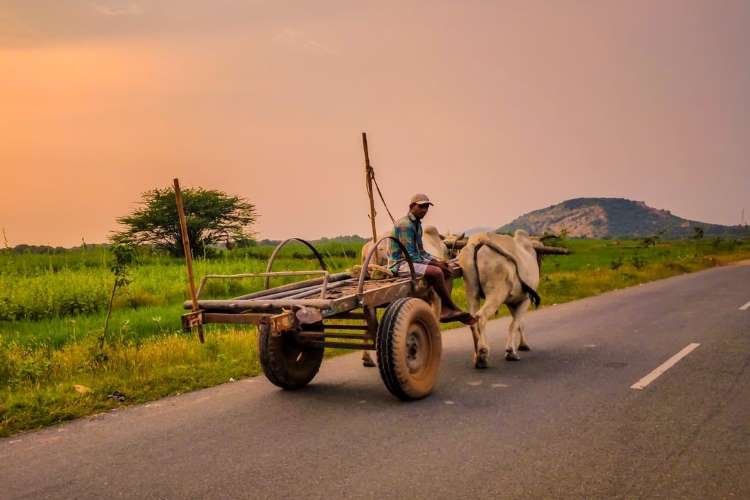
The Union Budget 2022 could be a watershed event for the Indian economy. It is an opportunity to put India in an accelerated mode, not just in terms of wealth creation but also in tapping sustainable employment opportunities and stepping up social protection to the vulnerable. Industrial growth is at a nine-month low of 1.4% and retail inflation has risen to a six-month high of 5.59%. The need of the hour is to put more money in the hands of people to boost demand. This cannot be achieved just by doling out direct benefits.
The government must ensure that Budget 2022 will trigger employment, increase agricultural production and spend enough on infrastructure. As the closure of businesses due to the Omicron variant will hurt the service sector, it is important to come up with policies to ensure minimum disruption.
READ I Unemployment biggest challenge for FM in Budget 2022
Budget 2022: Invest in infrastructure
Optimal use of resources is needed for surviving the crisis. Higher infrastructure spending is key in situations like this. It is important to converge MGNREGA and finance commission funds to build the infrastructure in rural areas. The budget 2022 must ensure that every panchayat has quality infrastructure such as concrete roads, drains, piped drinking water, panchayat office, school buildings, and an ANM office.
There is also a need to have a financial institution within a 5 km radius to promote financial inclusion. All this will not only improve the quality of life in 6 lakh villages, but also keep the population safe from diseases such as gastroenteritis and malaria.
The time has come to take a relook at the financial inclusion model to iron out the irritants. The success of inclusion efforts will depend on the involvement of post offices, cooperative banks, and commercial banks. India has 1,55,000 post offices, 1,531 urban cooperative banks (UCBs), and 97,006 rural cooperative banks, besides formal banks including small banks that have 12,000 branches.
At least two-thirds of India’s population is catered to by post offices and cooperative banks. This will rectify the mistake of the Jan Dhan scheme which allowed accounts only in banks, resulting in the exclusion of a large number of people.
READ I Budget 2022 must invest in monitoring education, health schemes
Importance of common household database
Therefore, it is important to mark a command area and allow the opening of accounts in all categories of institutions within a 5 km radius — the Madhya Pradesh model of financial inclusion. Having an account that is loaded in common household (SAMAGRA) database enables smooth direct benefit transfer and improves the credit worthiness of the holder.
The common database will help understand the benefits enjoyed by the individual and family. This will help in targeting the benefits better and ensuring that no one is left behind. The practice of opening a new account for every scheme will put additional pressure on financial institutions, leading to confusion. It is equally important to improve credit worthiness.
A financial institution in a 5 km radius is viable if turnover is Rs 3 crore per annum. Besides DBT accounts, the branches can have individual accounts and panchayat account and can easily have a turnover of Rs 5 crore per annum or more. The Budget needs to rectify this anomaly.
The infrastructure will boost local employment. MGNREGA funds can be used in individual fields for land leveling and water supply, enabling marginal farmers to enhance productivity with the help of Krishi Vigyan Kendras. An MSP can easily be fixed for each produce, based on the return on investment for farmers. If input cost is reduced, it will ensure better returns. Investment in infrastructure will improve quality of life by graduating from wage employment to occupations that offer better remuneration from their land and skills.
READ I Budget 2022 may shift focus to asset management
So, investment in village infrastructure is a surefire way to enhance income and boost demand in the economy. This does not require additional funding, but better utilization of earmarked funds. Budget 2022 can achieve better outcomes by converging the available funds to create an impact.
Social protection need not be lost in aggregated data. India is a signatory to SDGs and the principle of ‘leaving no one behind’ which needs better targeting. Eight states have already adopted the MP model of SAMAGRA. Old age pensions, scholarships, preventive and curative healthcare, housing subsidies and other subsidies can be better targeted using technology. More importantly, the common household database will give real time data to help better utilization of resources.
Increase in demand for FMCG products will push industrial output and job creation. IT industry is important for employment generation and needs various skills that are evolving. So, skilling should be the focus of every employer and not just of isolated skill programmes. The IT industry could help local value addition through food processing, fintech, e-commerce, MSME manufacturing, service sector, tourism and hospitality.
A pan-India PDS that allows individual to draw provisions anywhere in India is another area that needs the attention of Budget 2022. It is important to graduate from the already available common household database and use SAMAGRA, which allows each department to work on it.
READ I Data Protection Bill: Sweeping powers to government worrisome
Strengthen social security net
The Budget needs to invest more in education and health. Children under 18 need to be exposed to computer knowledge, arithmetic, reading/writing ability in the mother tongue/national language, geography and history till class 8. After class 8, they need exposure in areas of their interest and must be attached to potential employers for apprenticeship with cost of training borne by government. A skill imparting budget should be transferred for the same.
While Budget 2021 had its focus on healthcare, this year’s budget is expected to focus more on the infrastructure sector which is reeling under high steel prices. Several other industries such as manufacturing, automobiles, and construction are also are impacted by high steel prices.
It is widely expected that finance minister Nirmala Sitharaman will increase capital expenditure in infrastructure. The government should not hesitate to increase capital expenditure in infrastructure despite ballooning fiscal deficit. The huge spending on infrastructure announced earlier is yet to materialise.
The Budget should chip in with guarantees instead of direct lending. It is widely expected that Budget 2022 will increase allocation for roads and highways. The government should also consider the introduction of PLI schemes for railways and airports to accelerate infrastructure growth.
For the flagship scheme Make in India to succeed, it is important to control input costs. Power and steel will become cheaper if the Rs 400 per tonne cess on coal is removed. The factory phase of manufacturing is competitive in India, but the manufacturing suffers from expensive credit, logistics, and power. It is important to rationalise the taxation of inputs. The revenue loss for the government will get offset by higher production, consumption and GST revenue. So the economy cannot afford an ordinary Budget 2022 – it needs a smart one.
Dr Aruna Sharma is a New Delhi-based development economist. She is a 1982-batch Indian Administrative Service officer. She retired as steel secretary in 2018.

